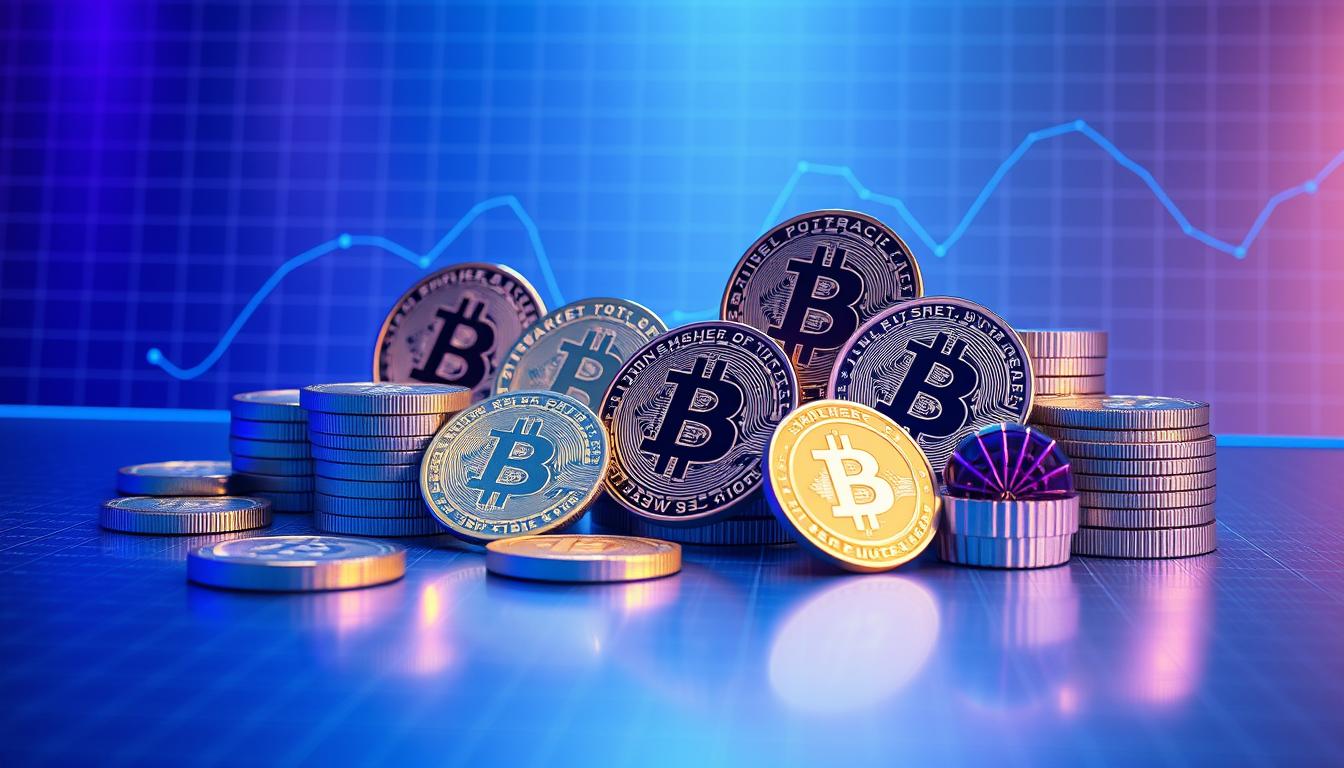Now Reading: Discover NFT Staking Platforms for Passive Cryptocurrency Earnings
- 01
Discover NFT Staking Platforms for Passive Cryptocurrency Earnings
Discover NFT Staking Platforms for Passive Cryptocurrency Earnings

The digital collectibles space has evolved far beyond art and gaming items. Recent data shows this market surged from $15.53 billion in 2021 to a projected $73.90 billion by 2028. This growth reveals fresh ways for investors to maximize holdings without parting with them.
Innovative networks now let users earn rewards by participating in blockchain ecosystems. By locking unique tokens, holders generate ongoing yields while retaining ownership. This approach turns static collections into active wealth-building tools.
Our guide explores proven methods to benefit from this shift. We analyze services that simplify participation across different blockchain environments. Whether you’re new to digital ownership or an experienced collector, these strategies offer portfolio diversification and sustainable growth.
Key Takeaways
- Digital collectible markets are projected to grow nearly 5x by 2028
- New systems enable earnings without selling valuable holdings
- Blockchain networks now support multiple reward-generating methods
- Strategic participation can enhance long-term investment returns
- Solutions exist for various experience levels and collection types
Understanding NFT Staking
Blockchain technology continues to unlock new financial opportunities beyond simple asset trading. One emerging method lets owners generate returns from unique digital holdings without relinquishing ownership rights. This approach combines asset retention with reward accumulation through specialized protocols.
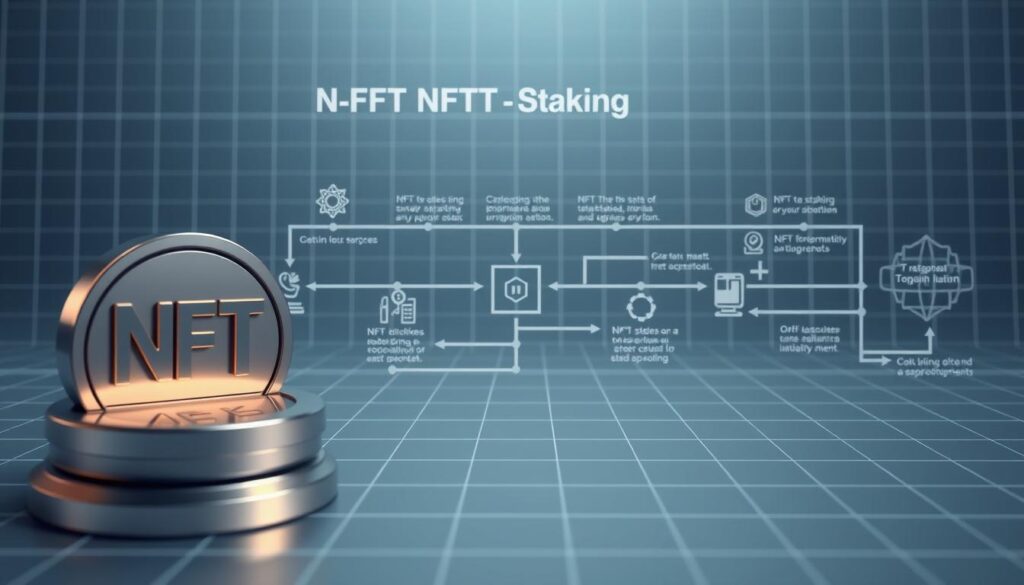
Core Mechanism Explained
The system operates through smart contracts that temporarily hold digital collectibles. Owners transfer eligible items like virtual art or gaming assets to these secure agreements. During the holding period, participants earn incentives based on platform rules and network activity.
Operational Framework
Three primary components drive this process:
- Eligibility requirements: Specific criteria determine which assets qualify
- Lock-up durations: Fixed periods ranging from days to months
- Reward structures: Payments in native coins, additional collectibles, or stable currencies
Major blockchain networks like Ethereum and Binance Smart Chain host these programs through decentralized applications. Participants maintain full ownership rights while their assets contribute to network security and liquidity. This symbiotic relationship benefits both users and blockchain ecosystems through enhanced participation.
Benefits of NFT Staking for NFT Holders
Digital ownership now offers more than just collection potential. Innovative systems let users unlock value from their holdings while maintaining full control. This approach reshapes how collectors interact with unique tokens, creating opportunities beyond traditional buying and selling.
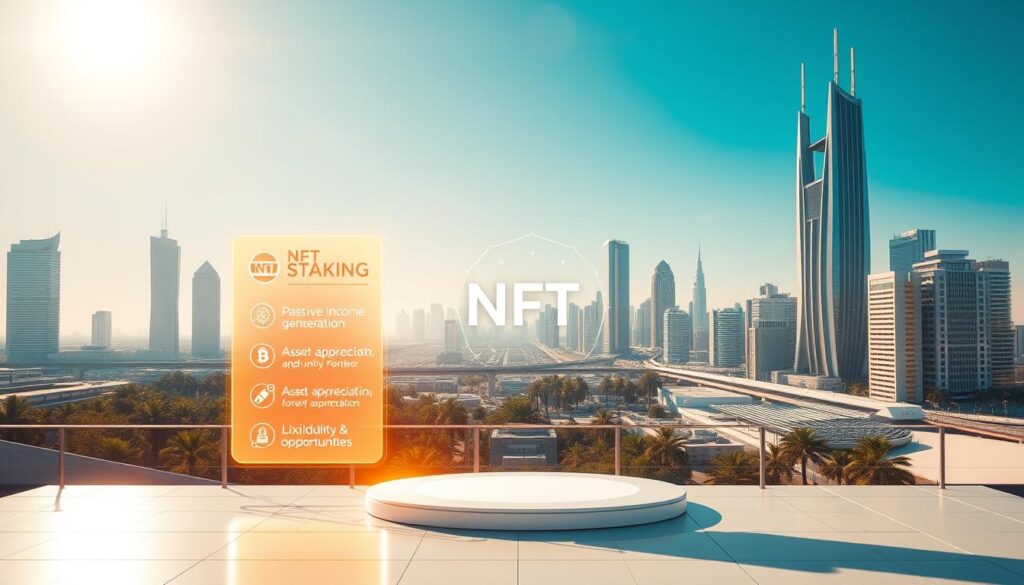
Steady Rewards From Digital Holdings
Locking digital assets in smart contracts allows owners to generate passive income through automated systems. These rewards accumulate regardless of market conditions, making them ideal for long-term strategies. Many programs offer flexible durations, letting participants choose timelines matching their financial goals.
Seasoned collectors appreciate this method’s dual advantage. It preserves ownership rights while creating recurring value streams. Over time, compounded returns can significantly boost overall portfolio performance.
Expanding Asset Functionality
Modern blockchain solutions transform collectibles into active financial tools. This enhanced utility attracts diverse audiences, from art enthusiasts to decentralized finance adopters. Assets gain multiple purposes beyond display cases or gaming inventories.
Diversification becomes achievable through strategic participation in these ecosystems. Owners reduce reliance on volatile markets by establishing alternative income channels. The added functionality also increases asset desirability, potentially elevating their market value over time.
NFT Staking Platforms for Passive Cryptocurrency Earnings
The expansion of blockchain ecosystems has given rise to specialized services that transform digital collections into income-generating assets. These solutions cater to diverse preferences, from gaming enthusiasts to decentralized finance proponents, while maintaining asset ownership.
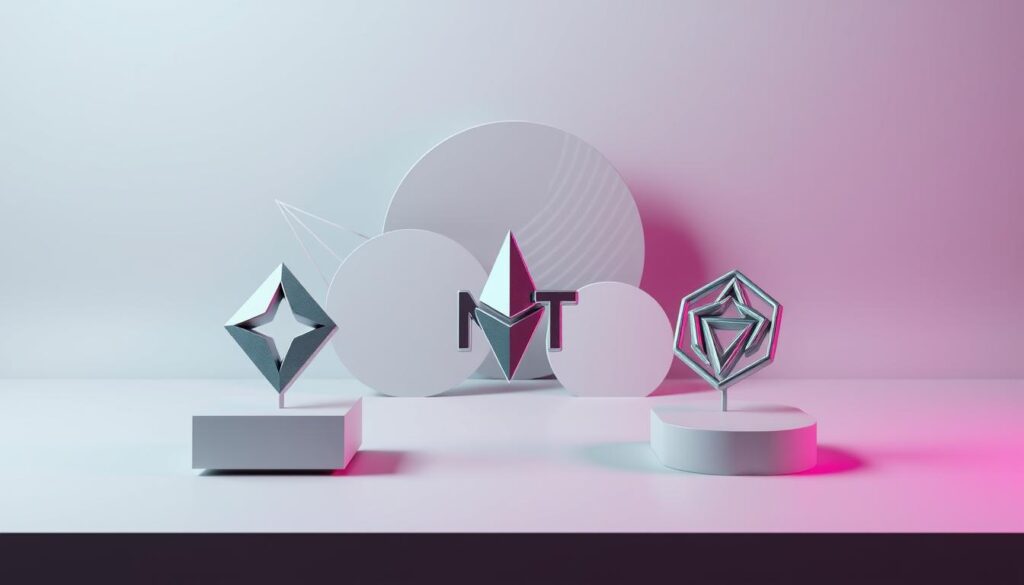
Overview of Leading Platforms
Rarible stands out by combining governance participation with reward generation. Users locking RARI tokens gain voting rights alongside periodic payouts. NFTX takes a novel approach, letting collectors bundle items into index-like vaults that produce tradable shares.
Axie Infinity merges gaming mechanics with financial incentives. Players deploy in-game creatures to earn rewards through strategic participation. Mobox enhances this model by blending yield farming with interactive gameplay, creating dual-purpose entertainment and earning opportunities.
Comparative Features and Rewards
Platforms vary significantly in their structures. Aavegotchi offers gamified DeFi integrations where staked assets generate returns through mini-games. R-Planet supports cross-collection pooling, enabling diversified exposure without selling rare items.
Key differences include:
- Reward frequency (daily vs. weekly distributions)
- Lock-up flexibility (fixed vs. adjustable durations)
- Payment options (native coins or multi-token systems)
Advanced services provide automated compounding and customizable strategies. Comprehensive guides help users navigate these options effectively. By analyzing fee structures and withdrawal terms, collectors can optimize their earning potential across multiple ecosystems.
Risks and Considerations in NFT Staking
Engaging with digital asset ecosystems requires careful risk assessment. While reward opportunities exist, participants must understand potential pitfalls that could affect returns and asset security.
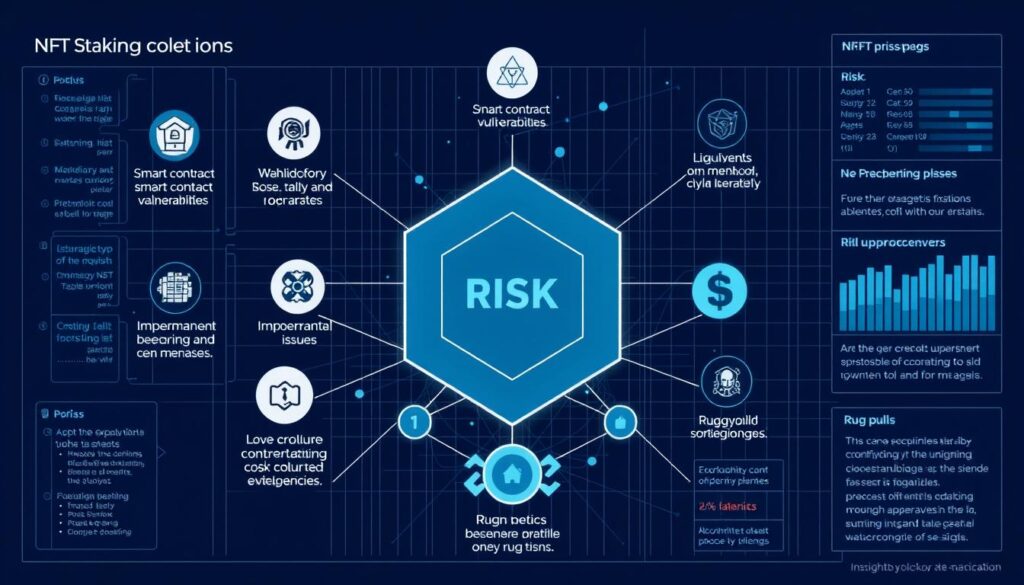
Market Volatility
Price swings dramatically impact both digital collectibles and reward tokens. A rare artwork’s value might drop 40% during a market correction, while rewards could lose purchasing power if token prices fall. Timing becomes critical – locking assets during peak periods might limit profit-taking flexibility.
Platform Security Measures
Not all services provide equal protection for staked NFTs. Key safeguards include:
- Third-party smart contract audits by firms like CertiK
- Multi-signature wallet access protocols
- Real-time transaction monitoring systems
Established platforms often maintain insurance funds to cover potential breaches. Newer entrants may lack these resources, increasing exposure to theft or technical failures.
Liquidity Constraints
Lock-up periods create accessibility challenges. A six-month commitment prevents selling assets if the market surges unexpectedly. Some platforms impose early withdrawal penalties up to 25%, eroding potential gains. Diversification across multiple lock durations helps balance opportunity costs and liquidity needs.
Conducting thorough due diligence reduces these risks. Review historical platform performance, community trust metrics, and asset volatility patterns before committing holdings. Strategic planning turns potential obstacles into manageable factors within broader investment strategies.
How to Get Started with NFT Staking
Entering the world of digital asset utilization requires careful planning and strategic execution. Successful participation begins with two critical phases: securing compatible items and choosing trustworthy networks.
Acquiring Eligible Digital Assets
Identify collections that support reward programs through community forums or project whitepapers. Established digital art series and gaming-related collectibles often provide clearer earning frameworks than niche items. Compare prices across multiple marketplaces to balance acquisition costs with potential returns.
Selecting a Reliable Staking Platform
Prioritize networks with transparent reward calculations and verified security audits. Key evaluation factors include:
- Historical payout consistency
- Multi-factor authentication features
- Community-driven governance models
Many users benefit from testing platforms with small holdings before committing valuable assets. Document lock periods and withdrawal rules to avoid unexpected limitations.
Thorough research reduces risks while maximizing opportunities to earn passive rewards. Regularly review performance metrics and stay updated on platform changes to optimize your strategy over time.
Exploring Additional Strategies to Earn Passive Income
Digital asset ownership unlocks multiple pathways for value creation beyond traditional methods. Savvy collectors can leverage decentralized tools to amplify returns while maintaining full control of their holdings.
Yield Farming Through DeFi Integration
Advanced strategies merge digital collectibles with liquidity pools. By pairing rare items with cryptocurrencies, holders earn fees from decentralized trading activity. Protocols like Aavegotchi reward participants who provide collateral for borrowing markets.
This approach creates layered income streams. Users gain protocol-specific tokens alongside transaction rewards – all without selling prized collections. Automated systems compound returns when reinvested.
Asset Rental Marketplaces
Temporary leasing arrangements open new opportunities. Platforms like reNFT use smart contracts to manage secure rentals. Gamers access high-value tools for competitive play, while owners generate passive yields from underutilized assets.
Flexible terms allow customized earning strategies. Short-term leases cater to event-driven demand, while long-term contracts ensure steady income. This model benefits both parties through transparent, automated agreements.





